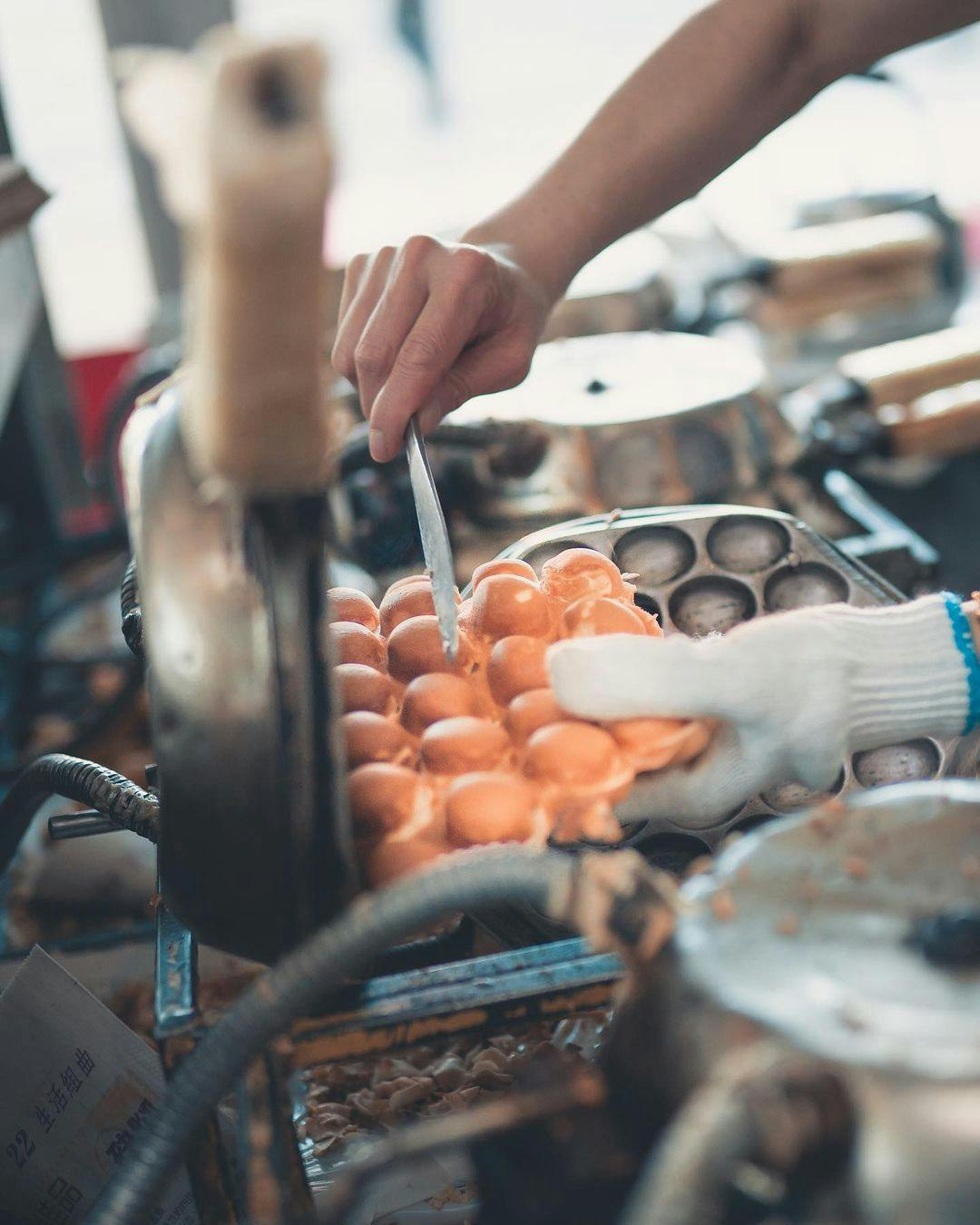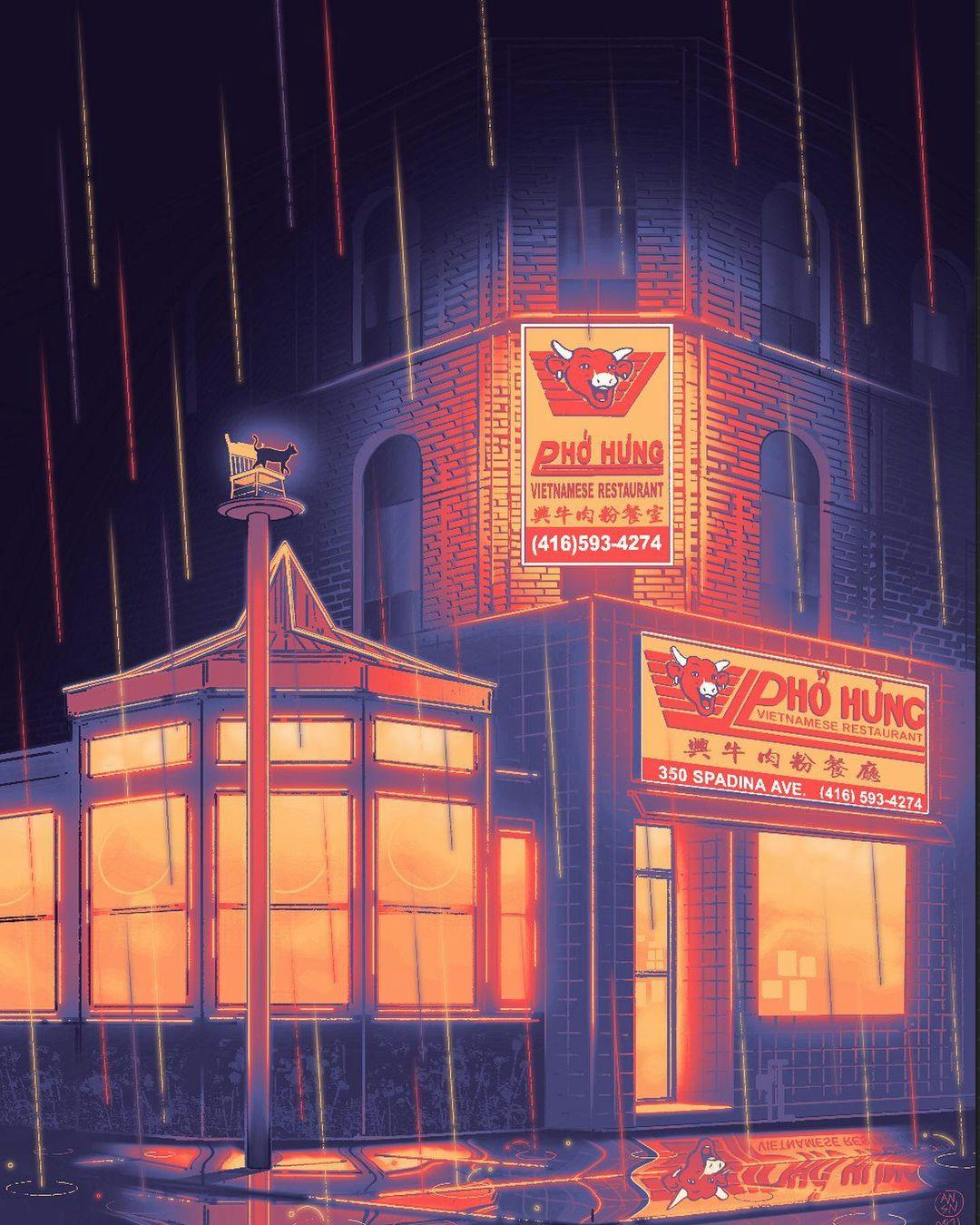Toronto is recognized as one of, if not the, most multicultural cities in the world, and one neighbourhood that truly showcases even just a glimpse of the city's wavering diversity is Chinatown.
Anson Ng, a local artist, has recently been capturing his childhood memories of Toronto’s Chinatown through his artwork across different artistic mediums. In his most recent collection of digital paintings, Ng animates iconic Chinatown landmarks, which he claims are inspired by nostalgia and fond family memories in the neighbourhood as a kid.
“Most of our time spent in Chinatown was on Sundays when we would eat together because Sundays would be the only day our family could be together,” says Ng, who mentioned that his family operated a Thai restaurant growing up. “Most of my artwork is largely inspired by those memories I had on Sundays.”
Chinatown is home to many of Toronto’s long-standing restaurants and buildings, which Ng has tried to immortalize in his artwork. His first iteration features one of the neighbourhood’s most notable and well-known buildings––Dragon City Mall––which houses a number of Asian-operated businesses and practices.

Perched on the corner of Spadina Avenue and Dundas Street, this iconic spot is also home to some of the city’s best Asian eats.
The Owl of Minerva, a Korean franchise that has expanded to 14 locations in the GTA and counting, opened their Dragon City location in 2010 and marked the company’s third storefront. On weekend mornings, the clanking of plates and yelling in Cantonese was the norm during Sky Dragon Restaurant’s morning dim sum service––situated on the top floor of the building. More recent additions to the landmark include the sought-after Juicy Dumpling and the second-floor gem Canteen.
But, likely one of Dragon City’s most prized vendors is the market-style, cash-only Hong Kong waffle cart found in the lobby of the mall that has been there for years. Tung Tung Dan Quen King makes fresh-to-order bubble waffles that are truly unmatched, and ones that Ng says he treasured dearly while growing up around the neighbourhood.

Ng’s parents opened their restaurant, Thai Princess, on King Street West in 1998. Having grown up in and around the family’s restaurant and working there for a number of years growing up, it was only fitting that Ng would return to the food industry in some form––in this case, taking shape in his artwork.
“I spent a lot of time in the food industry, because naturally, my parents opened a restaurant and I kind of grew up in a kitchen. Being in a restaurant was very familiar to me,” says Ng, who notes that his family sold the business in 2015.
The selling of the restaurant allowed Ng to carve his own path and pursue something he felt passionately about. Soon after, Ng enrolled in the illustration program at Sheridan College––which he credits to be one of the best decisions of his life.
“With our restaurant kind of closing and having given the culinary industry six or seven years of my life, I thought it would be unfair to me to not have tried to do art,” says Ng. Now, his worlds collide in a series of digital paintings that combine his love for art and appreciation of food.
As one of Toronto’s landmark destinations, Chinatown is a local marvel––housing dozens of authentic, one-of-a-kind spots for Asian eats. While the area is typically buzzing with night owls, neon signs and after-bar shenanigans, Ng found himself in the neighbourhood during the pandemic, noticeably quieter and not as frantic.
“I spent some time in Chinatown during the pandemic, and it felt different. People weren’t around; things were kind of quiet. But, the lights were still on,” says Ng. “Something about Chinatown seemed different, but familiar.”
In most of Ng’s Chinatown paintings, a specific colour palette is consistent throughout that imitates a moody and eerily quiet nature that Ng hopes to translate from his witness into his work. Rain shooting down and splashing into pooling puddles is also a trend amongst the paintings.
Ng has painted other local favourites as well, such as the glorious House of Gourmet––fitted with fresh BBQ duck and pork hanging in the windows––or the hard-to-miss Pho Hung, the cherished Vietnamese spot that takes up the corner of Spadina Avenue and St. Andrew Street.

He details the days he and his family would waltz into Chinatown on Sundays to enjoy a dim sum feast––a tradition that many families partake in. In one painting, a massive yellow banner that reads "ALL-DAY DIM SUM" hangs below Chinatown's famous Rol San Restaurant, a local favourite for breakfast dim sum and late-night, post-bar meals.
Now, the artist is beginning to reclaim some of those memories, noting that returning to the area to capture some of the scenes resulted in a deeper longing for those moments––something that he says his followers can relate to.
“When I started to paint, that’s about the time when I missed it the most. When I started posting [my artwork], I noticed people also missed these spaces too.”
As Chinatown continues to reopen after the disastrous impacts of the pandemic, Ng is continuing to capture scenes in Chinatown, but is choosing to do more on-site painting––an artistic medium that, he says, feels more significant.
"I think it's so important, at least for me, to go out and [paint] these places physically in front of me," says Ng. "It almost feels like when I'm there, in the moment, it feels like I'm capturing a snapshot through a lens––my lens."










